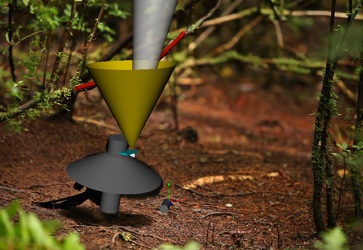From microscopic feather structure to whole-organism display behavior:
Using multiple specimen types to uncover the private courtship signals
of Parotia wahnesi (Paradiseidae).
Todd Alan Harvey1, Edwin Scholes2, Kimberly S. Bostwick3, Timothy Laman4, Steve Marschner5
1Department of Ecology and Evolutionary Biology, Yale University
2Lab of Ornithology, Cornell University
3Cornell Museum of Vertebrates, Cornell University
4Museum of Comparative Zoology, Harvard University
3Department of Computer Science, Cornell University
The Extended Specimen: Emerging Frontiers in Collections-based Ornithological Research
American Ornithologists' Union 2013
August 17, 2013

